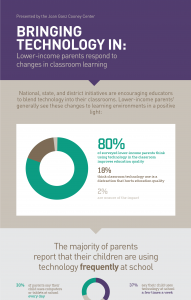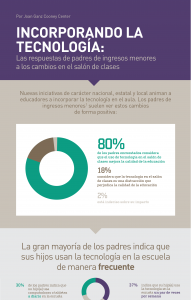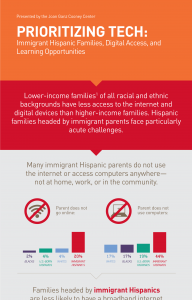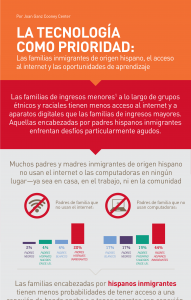Internet service and digital technologies are critical for accessing a broad range of resources and opportunities. But how do low-income families decide whether to take advantage of programs (such as the Federal Communications Commission’s Lifeline program) that offer them reduced-cost broadband access and devices? How do they adopt digital technology, and what impact do these initiatives have in how families engage these technologies for learning?
In this series of infographics drawn from Opportunity for All, we present findings from a nationally representative survey of 1,191 lower-income parents of school-age children designed to explore issues related to connectivity trends across the United States. Our first installment, “Under-connected in America: Digital Equity Challenges for Lower-Income Families,” illustrates obstacles to high-speed connection and the ways in which reduced internet access hinders learning for children and their parents. In “Bringing Technology In: Lower income parents respond to changes in classroom learning,” we present lower-income parents’ responses to classroom technology use within an education landscape that is increasingly digitized. And our third and final infographic, “Prioritizing Tech: Immigrant Hispanic Families, Digital Access, and Learning Opportunities,” highlights details about the disproportionate challenges that lower-income families face, particularly those of Hispanic origin headed by immigrant parents, when compared with higher-income families.
These infographics are now available in English and Spanish. Click on each thumbnail below to view the PDF.









